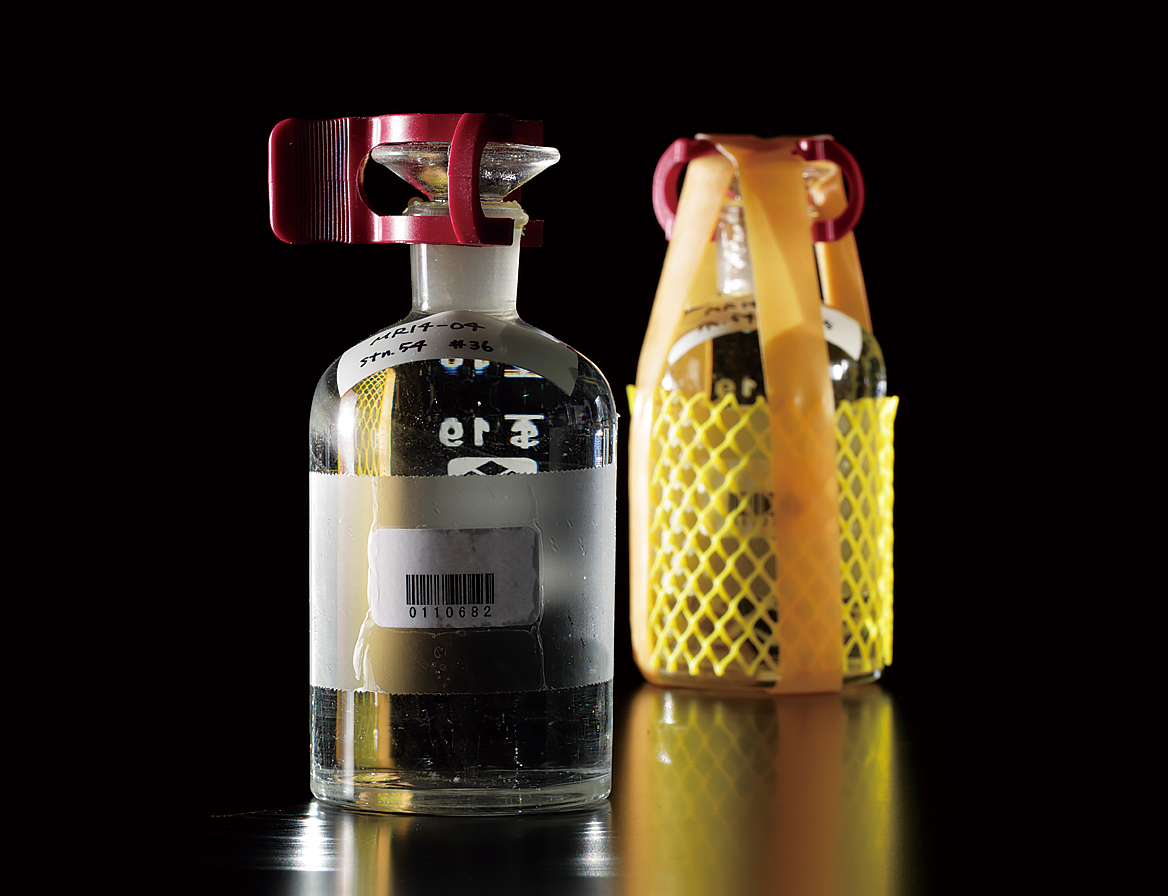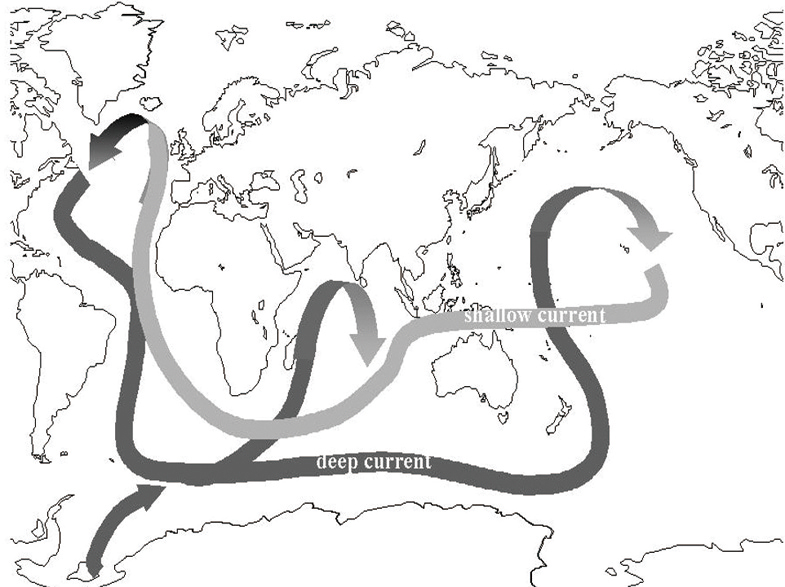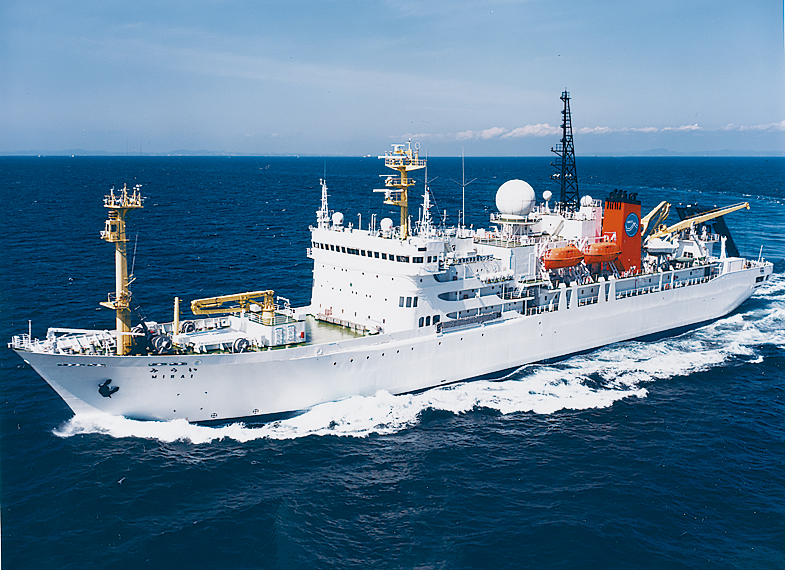H4
The seawater back from 2000 years ago to the future
Research project on the shell revealed that the Okhotsk Sea has "old" water than Pacific. This difference is related to the global circulation of deep water called "thermohaline circulation", meaning the circulation by heat and salt. In the region near green land and Antarctic, the surface water became very cold and very salty because of the water trap in sea ice. The cold and salty water is heavier and the downstream to the bottom of ocean causing in these regions became trigger of global circulation which takes 2000 years.
Okhotsk is the goal of circulation and the samples collected by research vessel Mirai of Japan Agency of Marine Science and Technology (JAMSTEC) showed us very clear evidence by radiocarbon dating. Both two samples were collected in 2014 at the location of 39º 56.93'N, 147º 42.79E showed very different apparent radiocarbon ages; one from -4900 m was 1980 year BP and -10 m was -450 year BP.
Does the years with minus means future? It means that modern 14C concentration excess the standard value in “natural” atmosphere because of the anthropogenic radiocarbon by atomic bomb testing in atmosphere. The anthropogenic 14C called “bomb 14C” has disturbed the natural abundance of 14C in surface water and it is difficult to evaluate is by modern samples. That is the reason we measured shell collected in the Meiji era. The “bomb 14C” can utilize as a kind tracer in global level to understand the dynamics of water-mass in ocean, for example.
The water circulation in surface layer is also important for global condition. The thermohaline circulation was probably disturbed by “sweet” melt water from terrestrial ice sheet in the transition from the last glacial period to the contemporary warm Holocene. At that time, the pollen data suggest the drastic increase of Dryas and the number of archaeological site drastically decreased. This cooling event is cold the Younger Dryas and this kind of drastic events were probably occurred frequently in the late Pleistocene. One of them might trigger the extinction of Neanderthal in Europe. (Minoru Yoneda & Yuichiro Kumamoto)



